Counting in First Grade Math
In first grade math, counting is the foundational skill that sets the stage for understanding numbers and basic arithmetic. The ability to count accurately and fluently is essential for young learners as they begin to explore the world of numbers and develop number sense.
Key Concepts
When teaching counting to first graders, it's important to cover the following key concepts:
- Number Sequence: Understanding the sequence of numbers from 1 to 100 and beyond.
- One-to-One Correspondence: Matching each object being counted to a single number word.
- Counting On and Back: The ability to count forward and backward from a given number.
- Grouping and Skip Counting: Recognizing patterns in numbers and counting by 2s, 5s, and 10s.
Teaching Strategies
Here are some effective teaching strategies for helping first graders learn to count:
- Hands-On Counting Activities: Use manipulatives such as counting blocks, beads, or buttons to engage students in hands-on counting experiences.
- Number Charts and Number Lines: Utilize visual aids like number charts and number lines to reinforce the sequence of numbers and facilitate counting practice.
- Counting Games: Incorporate fun and interactive counting games to make learning enjoyable and engaging for young learners.
- Repetition and Practice: Provide ample opportunities for students to practice counting in various contexts to build fluency.
Study Guide
As a study guide for first graders learning to count, here are some suggested practice activities:
- Counting Objects: Have students count a collection of objects (e.g., pencils, toys, or snacks) and write down the total number.
- Counting Forward and Backward: Practice counting forward from a given number (e.g., start at 7 and count forward to 15) and counting backward as well.
- Number Sequencing: Fill in the missing numbers on a number line or number chart to reinforce the sequence of numbers.
- Skip Counting: Introduce skip counting by 2s, 5s, and 10s using visual aids and encourage students to practice skip counting on their own.
- Interactive Counting Games: Play counting games such as "Counting Bingo" or "Counting Scavenger Hunt" to make learning fun and engaging.
By mastering the skill of counting, first graders will develop a strong foundation for further mathematical concepts and build confidence in their ability to work with numbers.
.◂Math Worksheets and Study Guides First Grade. Patterns
Study Guide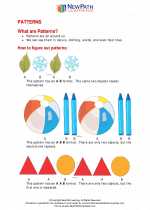 Patterns
Patterns  Activity Lesson
Activity Lesson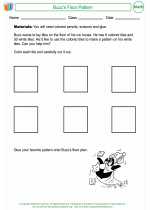 Buzz's Floor Pattern
Buzz's Floor Pattern  Worksheet/Answer key
Worksheet/Answer key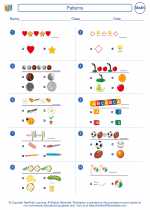 Patterns
Patterns  Worksheet/Answer key
Worksheet/Answer key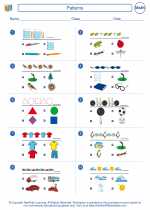 Patterns
Patterns  Worksheet/Answer key
Worksheet/Answer key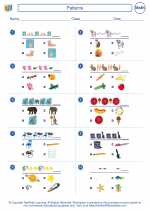 Patterns
Patterns  Worksheet/Answer key
Worksheet/Answer key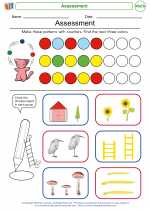 Assessment
Assessment  Worksheet/Answer key
Worksheet/Answer key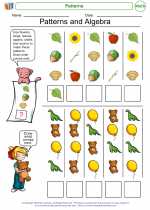 Patterns
Patterns  Worksheet/Answer key
Worksheet/Answer key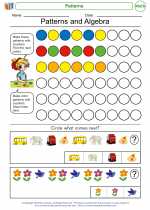 Patterns
Patterns  Worksheet/Answer key
Worksheet/Answer key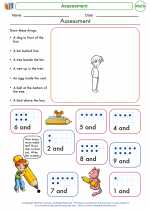 Assessment
Assessment  Worksheet/Answer key
Worksheet/Answer key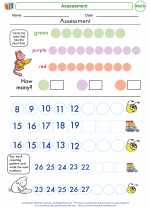 Assessment
Assessment  Worksheet/Answer key
Worksheet/Answer key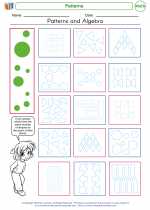 Patterns
Patterns  Worksheet/Answer key
Worksheet/Answer key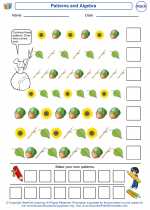 Patterns and Algebra
Patterns and Algebra  Worksheet/Answer key
Worksheet/Answer key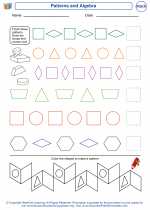 Patterns and Algebra
Patterns and Algebra  Worksheet/Answer key
Worksheet/Answer key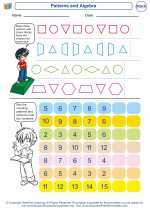 Patterns and Algebra
Patterns and Algebra  Worksheet/Answer key
Worksheet/Answer key Patterns and Algebra
Patterns and Algebra  Worksheet/Answer key
Worksheet/Answer key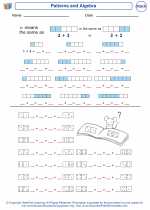 Patterns and Algebra
Patterns and Algebra  Worksheet/Answer key
Worksheet/Answer key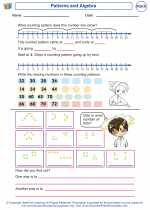 Patterns and Algebra
Patterns and Algebra  Worksheet/Answer key
Worksheet/Answer key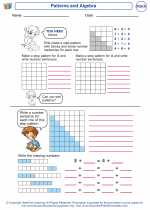 Patterns and Algebra
Patterns and Algebra  Worksheet/Answer key
Worksheet/Answer key Christmas Patterns
Christmas Patterns  Vocabulary/Answer key
Vocabulary/Answer key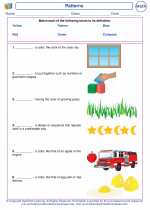 Patterns
Patterns 

 Activity Lesson
Activity Lesson
 Worksheet/Answer key
Worksheet/Answer key
 Worksheet/Answer key
Worksheet/Answer key
 Worksheet/Answer key
Worksheet/Answer key
 Worksheet/Answer key
Worksheet/Answer key
 Worksheet/Answer key
Worksheet/Answer key
 Worksheet/Answer key
Worksheet/Answer key
 Worksheet/Answer key
Worksheet/Answer key
 Worksheet/Answer key
Worksheet/Answer key
 Worksheet/Answer key
Worksheet/Answer key
 Worksheet/Answer key
Worksheet/Answer key
 Worksheet/Answer key
Worksheet/Answer key
 Worksheet/Answer key
Worksheet/Answer key
 Worksheet/Answer key
Worksheet/Answer key
 Worksheet/Answer key
Worksheet/Answer key
 Worksheet/Answer key
Worksheet/Answer key
 Worksheet/Answer key
Worksheet/Answer key
 Worksheet/Answer key
Worksheet/Answer key
 Vocabulary/Answer key
Vocabulary/Answer key

The resources above cover the following skills:
Algebra (NCTM)
Understand patterns, relations, and functions.
Recognize, describe, and extend patterns such as sequences of sounds and shapes or simple numeric patterns and translate from one representation to another.
Analyze how both repeating and growing patterns are generated.